|
|
| HEALTHY HAPPENINGS - November 2023 |
I don’t want to be normal. Do you?
by Ray Andrew, MD
|
John saw his doctor and was told, “Your labs are normal.” “Then why do I feel like s---- all the time?” “Well, John, you’re not getting any younger.” At 36, John wasn’t convinced that his best years were behind him. He decided it was time for a different approach.

During his first visit to Prestige Wellness Institute, John learned that his labs weren’t normal after all. His testosterone, white blood cells, and vitamin D were abysmally low, while one of his liver enzymes was concerningly high. How could one doctor tell John that his labs are normal and another claim they were anything but normal?
It all has to do with how we define normal. In America today, “normal” means dying of a heart attack, stroke, cancer, diabetes, or Alzheimer’s dementia. We are a sick population. Like the proverbial frog in the boiling pot, we have become accustomed to our level of disease and dysfunction. We accept it as if it has always been this way and will always be this way.
But it hasn’t. Many “normal” lab values are determined using population averages, not studies of healthy people. Suppose we were to run a certain test on 100 random people and plot their results on a graph. Then we take the lowest 2.5% of the results and call them too low and call the highest 2.5% of the results too high. The remaining 95% are then declared “normal”. Not all reference ranges are determined this way, but too many are. And guess what? Your body didn’t read that statistics book in college. What if 50 of those random people were on their way to heart attacks? Would we still call their lab results normal? Only if we didn’t want to help them take action before it’s too late.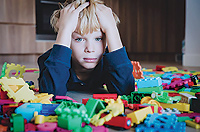
Taking a specific example, suppose your serum potassium level is 3.7. If your doctor hasn’t studied the medical literature from the last six years, she will tell you it is normal because it is between 3.5 and 5.5, which is what most laboratories consider normal. But this is not what the studies show. A potassium level below 4.0 increases your risk of premature death significantly. Even if your level is higher than that but below 4.5, your 10-year risk of developing diabetes triples. Diabetes itself dramatically increases risk of heart attack, stroke, cancer, Alzheimer’s, and more. If this is the cost of being normal, I think I’d rather be the oddball. Wouldn’t you? And potassium is just one of many dozens of lab tests that have “normal” ranges that are not based on studies of healthy physiology.
If you are told your labs are all normal—especially if you aren’t full of energy or are limited in any way from doing the things you love—then you might want to consider three very common possibilities: 1) one or more lab ranges is not based on studies of truly healthy people; 2) the tests you need in order to find the problem were not ordered; or 3) we don’t yet have good tests capable of showing what is wrong.
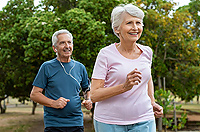 Another troubling example of this trend to normalize disease and dysfunction is a recent debate on “normal” temperature. Some doctors and scientists have actually advocated for abandoning 98.6 degrees Fahrenheit as the standard for normal body temperature. Why? Because so few people have this baseline temperature anymore. This would be like arbitrarily defining millions of Americans during the Great Depression as having “normal” incomes because such a high percentage were unemployed and financially destitute. What kind of sense does this make? Instead of lowering the bar, why not find out why Americans’ body temperatures have dropped? Every living cell in the body depends on the activity of thousands of enzymes. When temperature drops even a little, enzymes work slower if at all. This affects not only energy, but every health function imaginable. We shouldn’t be lowering our standards of “normal” just because fewer and fewer of us are healthy. Instead, we should be finding out why health is so quickly becoming a thing of the past and make serious course corrections. Another troubling example of this trend to normalize disease and dysfunction is a recent debate on “normal” temperature. Some doctors and scientists have actually advocated for abandoning 98.6 degrees Fahrenheit as the standard for normal body temperature. Why? Because so few people have this baseline temperature anymore. This would be like arbitrarily defining millions of Americans during the Great Depression as having “normal” incomes because such a high percentage were unemployed and financially destitute. What kind of sense does this make? Instead of lowering the bar, why not find out why Americans’ body temperatures have dropped? Every living cell in the body depends on the activity of thousands of enzymes. When temperature drops even a little, enzymes work slower if at all. This affects not only energy, but every health function imaginable. We shouldn’t be lowering our standards of “normal” just because fewer and fewer of us are healthy. Instead, we should be finding out why health is so quickly becoming a thing of the past and make serious course corrections.
The hallmark of any true scientist is an insatiable need to ask why and how without any agenda or predetermined conclusion. More than ever, we as a society needs scientists who ask, “Why have we medicalized health and normalized disease?” and “How has the rate of nearly every chronic disease known to man increased in spite of the billions of dollars we are spending to prevent and treat it?”
Take autism, for example. The CDC informs us that 1 American child out of 110 had autism in 2006. That jumped to 1 in 44 in 2021 and 1 in 36 in 2023. Some people claim the skyrocketing increase is due to improving diagnostic ability. To think that doctors are so much smarter than we were 2 years ago, and again compared to 17 years ago, is pretty wishful thinking. We’re talking about a brain disorder that did not exist before 1930. Sure, you could make the “better at diagnosing it” argument for very subtle cases on the spectrum. But before 1930, the world had never seen a child who was talking and walking suddenly regress to sitting idle, becoming nonverbal, and making no eye contact. By 2050, will there be any children not on the spectrum? Frankly, I don’t want my grandchildren and great grandchildren to have to cope with the consequences of any degree of autism any more than I want myself or my parents to deal with Alzheimer’s. These are both new diseases, so by definition they are 100% preventable. We aren’t hard-wired to get them. We just have to wake up and admit that we as a society are causing them.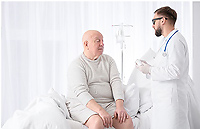
But let’s look at a problem that is far more widespread than brain disorders: Obesity. In the year 2000, 30% of Americans were classified as being obese. This increased to 42% by 2018. No, we’re not getting better at diagnosing obesity. We’re just getting heavier. Using the laboratories’ “95% of the population is normal” approach, it’s now normal, for the first time in human history, to be obese. And it’s not just from eating junk food, or from eating more calories while sitting on the couch. Hormone and neurotransmitter imbalances, unhealthy gut microorganisms, and toxins all play profound roles in determining your weight.
The bottom line is this: If you are tired of not being able to do the things you love to do; if you are alarmed by the epidemic of chronic diseases; if you refuse to accept “You’re just getting older” as an explanation for worsening health; and if you believe God made your body capable of healing itself as long as it has the right tools and avoids man-made interferences…let’s be oddballs together. Just because the health of everyone around you is going off a cliff doesn’t mean yours has to follow. You can undergo a program to restore your body to “factory settings” so you can get back to doing the things you love, and keep doing them for years to come. Do it your own way, or let us help you at Prestige Wellness Institute by calling (435) 210-0184. It’s OK to be different.
|
The Benefits of Choosing Hospice:
A Compassionate Approach to End-of-Life Care
|
Facing a terminal illness can be an emotionally challenging experience, both for the 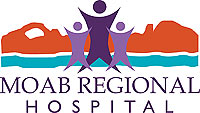 individual and for their loved ones. Hospice care offers a compassionate and holistic approach to end-of-life care during this time. Hospice care is about alleviating pain and suffering while also addressing emotional, psychological, and spiritual needs. individual and for their loved ones. Hospice care offers a compassionate and holistic approach to end-of-life care during this time. Hospice care is about alleviating pain and suffering while also addressing emotional, psychological, and spiritual needs.
Enhanced Quality of Life
The primary objective of hospice care is to enhance the quality of life for patients with terminal illnesses. Hospice professionals work to manage pain and discomfort effectively, ensuring that patients can enjoy their remaining time with minimal physical suffering. They provide personalized care plans tailored to the patient's unique needs and preferences, focusing on comfort and dignity.
Emotional and Spiritual Support
Hospice care recognizes that end-of-life care is about more than physical health; it is also about emotional and psychological well-being. The hospice team includes social workers and counselors who support patients and their families. They help individuals cope with the emotional challenges, anxiety, and depression that may accompany terminal illnesses. For individuals who draw comfort from their faith or spiritual beliefs, hospice chaplains can help patients and their families find solace and peace during this challenging time.
Home-Based Care
Most patients prefer to spend their final days at home, surrounded by loved ones, and in a comfortable environment. Hospice care makes this possible by offering home-based care services. Patients receive medical attention, pain management, and emotional support while staying in their homes. Hospice professionals work diligently to manage all of the patient's symptoms, and a hospice nurse is always available by phone. This attention to patient needs results in fewer ER visits and hospitalizations and allows patients to spend more time at home with their loved ones.
Care Coordination
Hospice care employs a multidisciplinary approach to ensure that patients receive comprehensive care. The care team typically includes nurses, doctors, social workers, chaplains, and other specialists. They collaborate to address all aspects of the patient's well-being, ensuring that physical, emotional, and spiritual needs are met.
Respite for Caregivers
Providing care for a terminally ill loved one can be emotionally and physically draining for caregivers. Hospice can offer family caregivers a much-needed break. Trained hospice volunteers provide support, allowing family members to rest and recharge and remain strong and healthy to best care for their loved one.
End-of-Life Planning
Hospice staff help patients and their families with critical end-of-life planning, including decisions about medical treatment preferences, living wills, and do-not-resuscitate (DNR) orders. End-of-life planning helps ensure that the patient's wishes are respected and followed, offering peace of mind to the individual and their family.
Bereavement Support
Hospice services do not end with the patient's passing. Hospice offers bereavement support for up to thirteen months to help families navigate the complex emotions that follow the death of a loved one. Grief counseling and support groups are available to assist families in their healing process.
Improved Communication
Hospice care supports open and honest communication between patients, their families, and the care team. This communication is crucial for ensuring everyone understands the patient's condition and wishes and can make informed decisions about the patient's care. Patients and families are encouraged to ask questions and express their concerns, fostering a sense of control during a challenging time.
Hospice care provides comprehensive support that goes beyond physical care to address emotional, psychological, and spiritual needs. Hospice care empowers patients and their families to make informed decisions, enhances communication, and fosters a sense of control during what is often a difficult time. The compassion and support offered by hospice professionals not only ease the physical burdens of terminal illnesses but also help individuals and families navigate the emotional journey with grace and resilience. Ultimately, hospice provides a compassionate approach to end-of-life care that is invaluable in preserving the comfort, dignity, and well-being of those facing the challenges of terminal illness.
If you are considering hospice care or would like more information, please reach out to Grand County Hospice at 435-719-3772
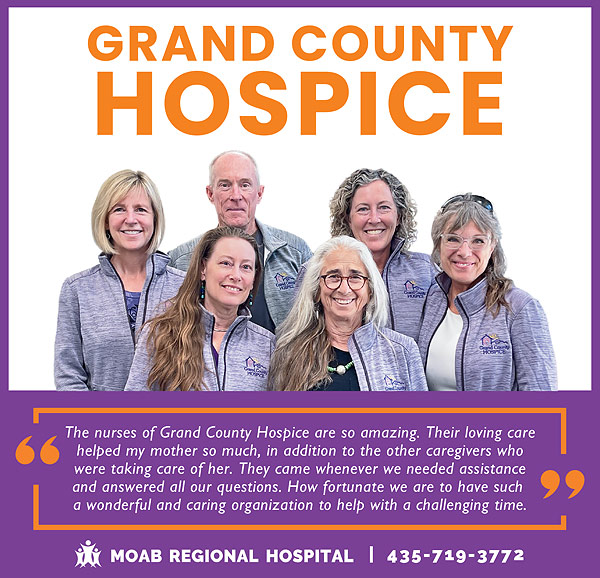
Free Community Lunch
Thursdays from 11:30am to 1:00pm at the St. Francis Episcopal Church (250 Kane Creek Boulevard, Moab). Free lunches for all who come by. Homemade soups (always several choices) or sandwiches, bread (chips with sandwiches), dessert, coffee and water. Call St. Francis Episcopal Church at 435 259-5831 for information.
Free Community Food Pantry
Fridays from 4-6pm at the St. Francis Episcopal Church (250 Kane Creek Boulevard, Moab) No ID, no name, no address, no personal information needed. We always have canned goods, bagged goods, meat. We often have bread, fresh produce, milk, cheese, fruit juice, eggs. Also personal toiletries, cleaning supplies, diapers, dog food. Feel free to pick up for someone who can't get out, or someone who is working. Call St. Francis Episcopal Church at 435 259-5831 for information.
Moab Valley Multicultural Center Food Pantry
Clients may access the Food Pantry once every two weeks. Schedule:
Mon Wed Thu: 9am-12pm, 1-5pm
Tue: 9am-12pm, 2:30-5pm
Fri: 9am-12pm
LUNCH at the Grand Center,
182 N. 500 W. Noon on Mon, Tues, Wed & Fri under 60: $6.00 over 60: $2.50 suggested donation
Moab Community Health Talks - Our Village Community Center hosts Dr. Don Leathers, naturopathic physician, and Sarah Cook, massage therapist health coach & lay homeopath in an informal round table discussion meant for community members to have their questions answered in a supportive space. Second Wednesday of each month. 1-2pm at Our Village Community Center, 721 N 500 W, Moab. Suggested donation of $5-$20. Info: ourvillage.org, phoenixrisingmoab.com, sarahcookmassage.com or 435-260-0294 or 435-259-8123
Moab Community Yoga
Tuesdays 6:30-7:30pm at the Moab Arts and Recreation Center (MARC) in the dance room. 111 E 100 N
Gyrokinesis® Class w/ Anne Howe
The Gyrokinesis® Method is a movement method that addresses the entire body, opening energy pathways, stimulating the nervous system, increasing range of motion and creating functional strength through rhythmic, flowing movement sequences. It is an original and unique method that coordinates movement, breath and mental focus. Thursdays 5:30-6:30pm. Sundari Yoga & Wellness Studio 1105 S US-191 #3 www.sundariyogamoab.com
Sheng Zhen Meditation - Thursdays 5:30-7pm at Moab Arts and Recreation Center. Other classes available and info at shengzhenmoab.com/
Community Reiki (Alternating Tuesdays, 9am & 3pm)
Join Crystal at Mindful Movement Moab, 76 S Main St Suite 15, for a free 30 minute community Reiki Session. Must be a local resident for the session. Sign up online at www.mindfulmovementmoab.com
Yoga in the Park (Wednesdays, Swanny Park, 5pm)
Join Breann with Wellness Collective for a 60 minute yoga session brought to the community by a partnership with USARA. Mats are provided and the class is open to everyone in the community. Yoga is free. At Swanny Park. Sign up for class online at www.wellnesscollectivemoab.com
Yoga in the Park (Thursdays, Swanny Park, 8am)
Join Crystal with Wellness Collective for a 45 minute yoga session brought to the community by a partnership with USARA. Mats are provided and the class is open to everyone in the community. Yoga is free and you can sign up for class online at www.wellnesscollectivemoab.com
Virtual Mindfulness Class (Thursdays, 6pm)
Join the facilitators with Wellness Collective for a 30 minute mindfulness session brought to the community by a partnership with USARA. Class is free and you can sign up online to receive the zoom link.
www.wellnesscollectivemoab.com
Virtual Trauma Sensitive Yoga (Mondays, 6pm) Trauma Sensitive Yoga focuses on the use of yoga movements as an opportunity to practice making choices with our bodies and to possibly notice what we feel in our bodies. Class is free and you can sign up online to receive the zoom link. www.wellnesscollectivemoab.com
|
|
|
|
|
|
|
|
|
© 2002-2024 Moab Happenings. All rights
reserved.
Reproduction of information contained in this site is
expressly prohibited.
|
|